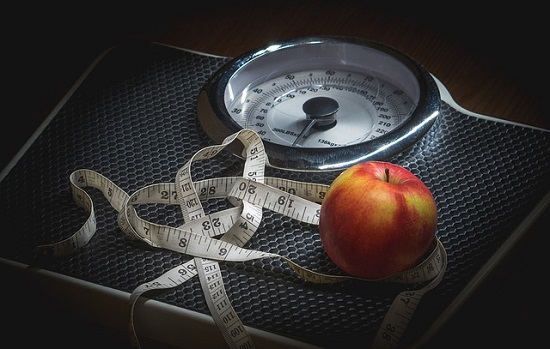It’s the most wonderful time of the year. Or is it? Not to Bah Humbug in your peppermint mocha but the holidays can be really hard. While music and parties and family can be fun, they can just as often be stressful. The holiday season can trigger all kinds of feelings besides joy- loss, grief, sadness, nostalgia, and longing. You could counter all this stress and emotional weariness with meditation, but it may be hard to get Zen if you’re sleeping on a couch in a house full of relatives. Just like it may be a challenge to practice gratitude as you are struggling to figure out how to afford all the gifts you need to buy. Of course, you could use your yoga practice to destress but good luck finding the time and space to “become one with your body” as you are sitting in an airport or driving down the interstate.
So what can you do? How can you destress when you’re not sleeping in your own bed or fighting holiday traffic? What can you do when your well-meaning relatives ask you about your relationship status or when you’re going to have a baby? The one thing that you can do any time, any place… the one thing you MUST do, is BREATHE.
As for my credentials, I may know a thing or two about stress. Not because I had a stroke or because I’ve dealt with infertility or any of the other myriad of health issues I’ve experienced. I know about stress because when I’m not writing, I teach public speaking to college students. I can see the stress on their lovely, little, unlined faces every day. Particularly on speech days.
Why Breathe?
Yes, obviously so you don’t die. But what are the specific benefits of paying attention to the breath? This is the place where I usually bombard you with research like:
- slow breathing lowers your blood pressure
- deep breathing slows heart rate
- breath control decreases stress response
- yogic breathing helps fight major depression
- breathing decisively reduces pain
Don’t just take my word for it, even The New York Times endorses breathing.
How to Breathe
Of course, you inhale and you exhale but there’s a little more to it when you practice conscious breathing.
Belly Breathing
If you have ever been to a yoga class, you’ve probably been asked to breathe down into your belly. Why? What does that even mean? Most of the time when we’re breathing unconsciously, we’re taking shallow breaths causing only the top of our chests to rise and fall. This doesn’t circulate much oxygen in our body. In order to practice belly breathing, or diaphragmatic breathing, begin to take deeper breaths, pulling the air down to the body and expanding the belly on the inhale, contracting it on the exhale. Though it’s referred to as belly breathing, the ultimate goal is to have you inhale into the entire chest cavity, expanding on all sides, and into the belly. This type of breathing massages the organs, strengthens the diaphragm, and allows more oxygen to circulate in your bloodstream. For my students, this type of breathing helps them not pass out when giving their speeches. For you, it can help you not chuck a glass of wassail at your loved one’s head when they begin to talk about politics.
Extended Exhale Breathing
One of my favorite breathing techniques is the extended exhale. When you exhale for longer than you inhale, you’re automatically calming the nervous system. This type of breathing is exactly what it sounds like: inhaling to the count of 3 or 4 then exhaling to the count of 5 or 6. You can also progressively lengthen both the inhale and the exhale, but focus on keeping the exhale longer, breathing out fully each time. While any time you’re concentrating on your breath, you are in the present moment, extended exhale breathing has the added benefit of counting. Do you know what you can’t do when you’re busy counting your inhales and exhales? For my students, it’s worry about your speech. For you, it’s worry about <insert the most stressful thing in your life here>. It’s nearly impossible to let your mind wander and become mired in anxiety when you have to count your breath. It’s also impossible to swear at the minivan that cut you off in holiday traffic when you are practicing extended exhale breathing.
Senobi Breathing
Senobi breathing is a technique involving stretching and breathing that has been shown to lessen depression and help with weight loss.
“After 1 min of the ‘Senobi breathing, substantial up-regulation of sympathetic nerve activity and increased urinary hormone secretion were observed in the overweight women but not in the healthy controls. Moreover, after repeating the exercise for a month, the obese patients showed significant loss of body fat. The ‘Senobi’ breathing exercise was found to be effective for weight loss.”
You can learn the technique here. So go ahead and have that second plate of holiday cookies. Then breathe and stretch your way into a new body for the new year.
Nadi Shodhana
Trying to do everything at once this holiday season—baking and shopping and wrapping? Try nadi shodhana or alternate nostril breathing. This technique is great for when you need to focus or find balance from too much multi-tasking. To practice alternate nostril breathing, you close your right nostril with your thumb or finger and inhale through the left nostril. Then you close your left nostril and exhale through the right. Keep the left nostril closed while you inhale back into the right nostril. Then close the right and exhale through the left. Keep the right nostril closed and inhale back into the left nostril. Then switch. Continue this pattern until you feel more centered. Find more detailed instructions here or you can watch a video explaining it here.
Sighing
Finally, if all of this sounds like something you’d roll your eyes at (though if it is you probably wouldn’t have read this far), know that you the sigh you just heaved at this article counts as breathing deeply. A 2010 study published in Physiology & Behavior found that “Spontaneous sighing is related to subjective relief of negative emotional states.”
According to researchers from Stanford and UCLA, “Heaving an unconscious sigh is a life-sustaining reflex that helps preserve lung function.” Which means the exasperation the holidays bring can help keep you healthy as long as you breathe. Just breathe.
We Need Your Help
More people than ever are reading Hormones Matter, a testament to the need for independent voices in health and medicine. We are not funded and accept limited advertising. Unlike many health sites, we don’t force you to purchase a subscription. We believe health information should be open to all. If you read Hormones Matter, like it, please help support it. Contribute now.
Yes, I would like to support Hormones Matter.
Image by karmasprenger from Pixabay.
















Thanks for helping me understand that we usually breathe shallow breaths most of the time which doesn’t circulate much oxygen throughout the body. With that in mind, I should learn how to breathe properly through the diaphragm. I hope to find a professional to teach me the right technique so that I don’t forget to breathe properly especially when I am stressed at home because of doing a lot of things at once.